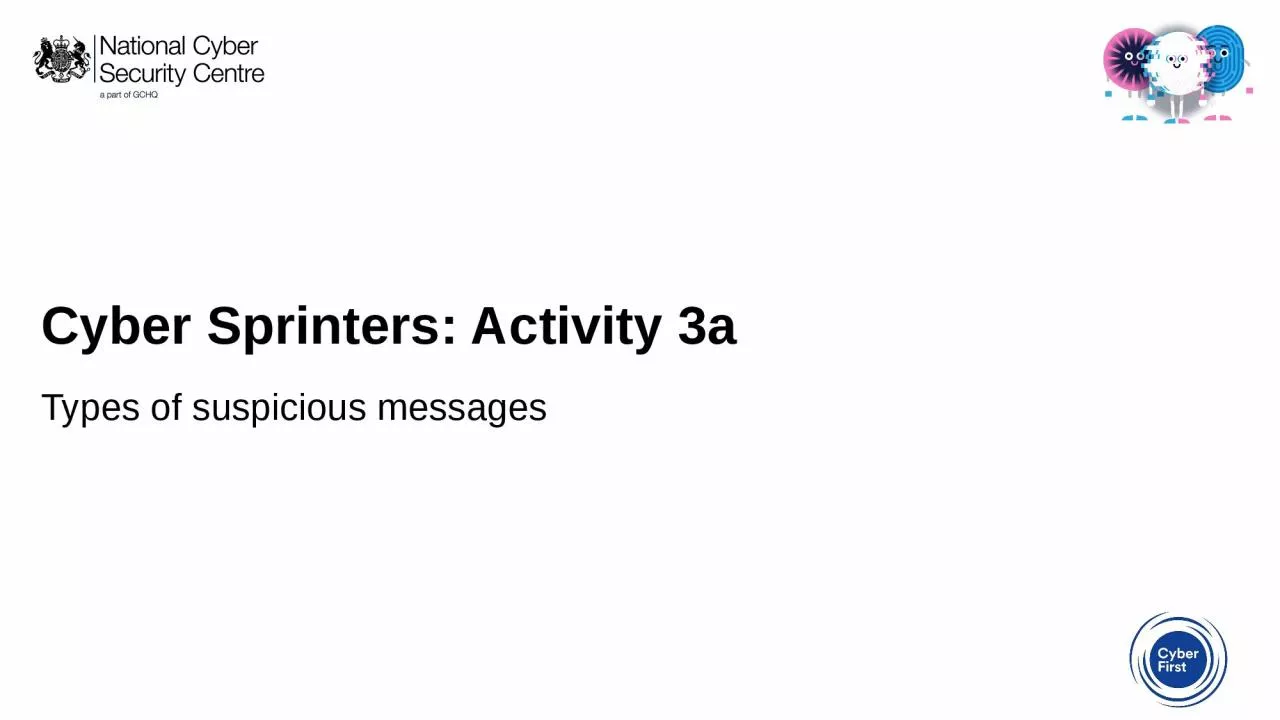

Types of suspicious messages CYBER CRIME EMERGENCY RESPONSE UNIT Urgent Request for Assistance Dear CCERU We have become aware of a particularly nasty group of criminals targeting innocent people in recent weeks ID: 1027507
Download Presentation The PPT/PDF document "Cyber Sprinters: Activity 3a" is the property of its rightful owner. Permission is granted to download and print the materials on this web site for personal, non-commercial use only, and to display it on your personal computer provided you do not modify the materials and that you retain all copyright notices contained in the materials. By downloading content from our website, you accept the terms of this agreement.
1. Cyber Sprinters: Activity 3aTypes of suspicious messages
2. CYBER CRIME EMERGENCY RESPONSE UNITUrgent Request for Assistance
3. Dear CCERU,We have become aware of a particularly nasty group of criminals targeting innocent people in recent weeks.These are criminals we are already aware of, but who have become increasingly sneaky and are therefore more likely to succeed in their evil plans.We urgently request the assistance of the Cyber Crime Response Unit.We’re sharing our current intelligence, and request that you undertake an undercover investigation to see if you can bring these criminals to justice.Kind regards,South West Constabulary South West Constabulary
4. Suspect 1: Evil EmailersHas been known to imitate an email from an official source, like a bank, doctor or online game designer. Can be really convincing, using official looking logos. Often creates a sense of urgency by giving a limited time to respond.Can be threatening. Uses fines or negative consequences to make you click on things, or share your details. Might offer extraordinary deals like large sums of money, or things that are much cheaper than they should be.Can use current events to make themselves seem even more plausible and relevant.Can encourage victims to offer up personal information that can then be used to hack into other accounts (eg usernames or passwords). Has also been known to get users to click on a link which downloads a virus onto their computer.Crime: Phishing (Email pretending to be from someone as bait to hook you into doing something that will cause you harm)
5. Suspect 2: Malicious MessengerHas been known to imitate a text from an official source, like a bank, doctor or online game maker. Often creates a sense of urgency by giving a limited time to respond.Can be threatening. Uses fines or negative consequences to make you click on things or share your details. Might offer extraordinary deals like large sums of money or incredible bargains.Can use things happening at the time to make themselves seem even more plausible and relevant.Can encourage victims to share personal information that can then be used to hack into other accounts (eg usernames or passwords). Has also been known to get users to click on a link which downloads a virus onto their phone.Crime: Smishing (Text message from someone as bait to hook you into doing something that will cause you harm)
6. Suspect 3: Phoney Phone CallerHas been known to imitate a phone call from an official source, like a bank, doctor or even someone you know.Can be really convincing, using authentic sounding information.Can be threatening. Uses fines or negative consequences to make the victim reveal details about their bank accounts, or usernames or passwords. Can use current events to make themselves seem even more plausible and relevant.Can create a sense of urgency and make you feel under pressure to act quickly.Crime: Vishing (voice message from someone as bait to hook you into doing something that will cause you harm)
7. What did these cyber criminals have in common?They all pretended to be someone that they weren’t.They all tried to get you to do something that could cause you harm.They use different ways to catch you out (scaring you, promising you something, getting you to act quickly).It’s a bit like someone having some bait on a fishing line that ‘hooks’ you, which is why it’s called phishing.